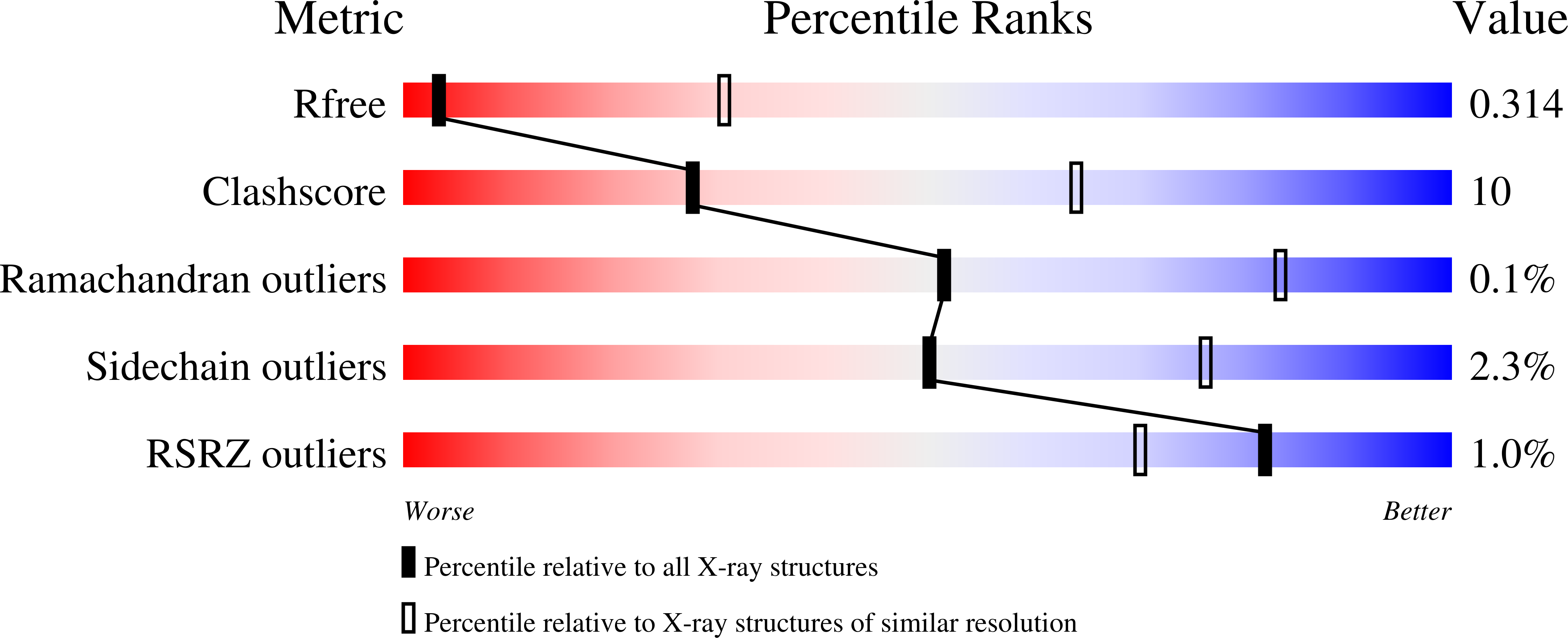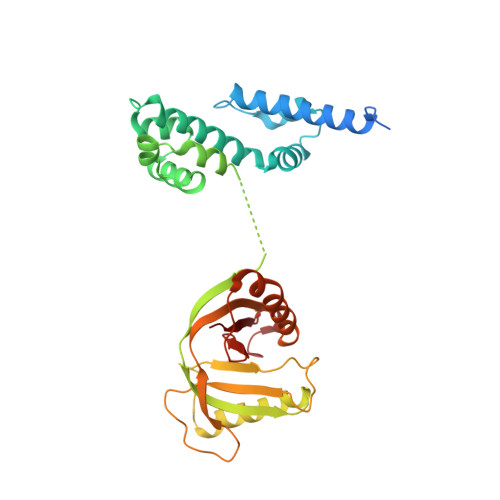Gene amplifications cause high-level resistance against albicidin in gram-negative bacteria.
Saathoff, M., Kosol, S., Semmler, T., Tedin, K., Dimos, N., Kupke, J., Seidel, M., Ghazisaeedi, F., Jonske, M.C., Wolf, S.A., Kuropka, B., Czyszczon, W., Ghilarov, D., Gratz, S., Heddle, J.G., Loll, B., Sussmuth, R.D., Fulde, M.(2023) PLoS Biol 21: e3002186-e3002186
- PubMed: 37561817
- DOI: https://doi.org/10.1371/journal.pbio.3002186
- Primary Citation of Related Structures:
7R3W - PubMed Abstract:
Antibiotic resistance is a continuously increasing concern for public healthcare. Understanding resistance mechanisms and their emergence is crucial for the development of new antibiotics and their effective use. The peptide antibiotic albicidin is such a promising candidate that, as a gyrase poison, shows bactericidal activity against a wide range of gram-positive and gram-negative bacteria. Here, we report the discovery of a gene amplification-based mechanism that imparts an up to 1000-fold increase in resistance levels against albicidin. RNA sequencing and proteomics data show that this novel mechanism protects Salmonella Typhimurium and Escherichia coli by increasing the copy number of STM3175 (YgiV), a transcription regulator with a GyrI-like small molecule binding domain that traps albicidin with high affinity. X-ray crystallography and molecular docking reveal a new conserved motif in the binding groove of the GyrI-like domain that can interact with aromatic building blocks of albicidin. Phylogenetic studies suggest that this resistance mechanism is ubiquitous in gram-negative bacteria, and our experiments confirm that STM3175 homologs can confer resistance in pathogens such as Vibrio vulnificus and Pseudomonas aeruginosa.
Organizational Affiliation:
Institute of Microbiology and Epizootics, Freie Universität Berlin, Berlin, Germany.














